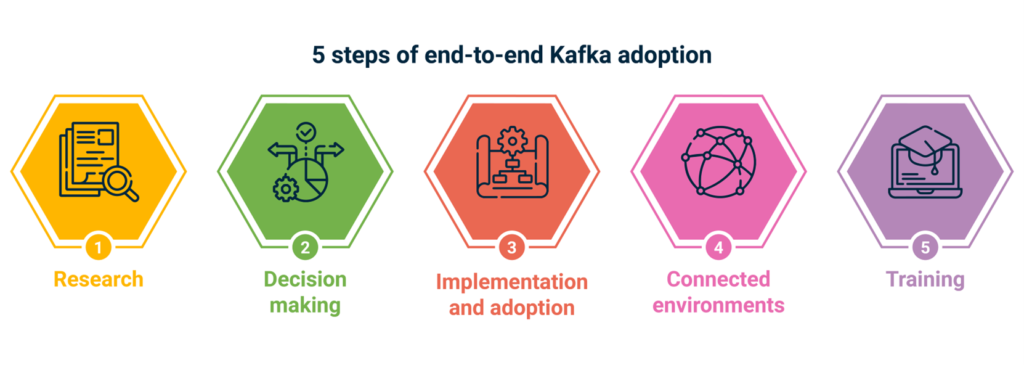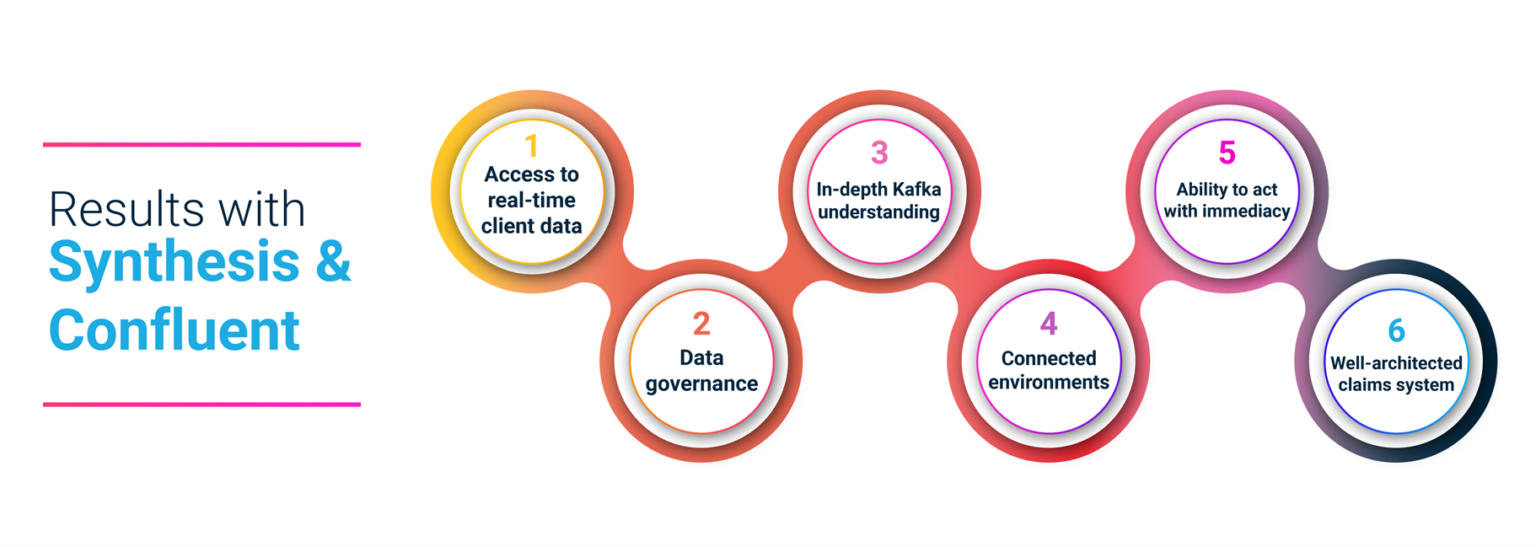
We have crafted solutions for industry leaders, combining years of expertise with agility and innovation.

Clients aren’t stagnant. Understanding their data shouldn’t be either. But most companies don’t have access to real-time data.
Data in motion or event streaming through Kafka is a way to understand what clients are doing and experiencing right now.
The client’s mission is to empower current and future generations to be financially confident, secure, and prosperous. Key to this is humanising technology and designing its digitalisation journey around its clients.
The company decided that using data in motion and Kafka would drive its mission.
It wanted to confirm if Kafka was appropriate for its needs and how to successfully adopt it.
In 2019, The client recognised the benefits of Kafka and foresaw that it would be a way to better service its clients through deep understanding and that this understanding would allow for insights into what products could be cross-sold to its clients.
“They were proactive,” explains Nick Walker, “the company saw the world was changing and recognised the power of Kafka early in the game.”
In 2020, adoption was perfectly timed with event streaming being used in one of its business units and a claims system ready for an update.
The client contacted Synthesis as a strategic consultant to investigate if event streaming could propel its mission.

5 steps of end-to-end Kafka adoption
Synthesis began by formulating a 50-page thought leadership and research paper which they presented to the client.
This included evaluating the client’s existing messaging technologies and systems, comparing traditional systems to developing streaming platforms, and guiding them on which technology to use and when to use it. This information was then taken on a roadshow throughout the group.
After conducting this research, Synthesis, and the client worked together to make the most informed decision for their environment.
The software company positioned data streaming architectures against typical enterprise architectures.
“We guided the client through the decision process and they picked on-prem managed Confluent because it allowed for the connection between their environments and because of its unappareled enterprise security and reliability which was backed by the first-class support from the Confluent team,” explained Darren Bak, Synthesis Head of Intelligent Data.
Synthesis then helped Sanlam with their Kafka implementation and set up their core Kafka cluster.
“We lay down the platform for them, together establishing all the standards, the governance, the operating model, and the way in which the client would operationalise and productionise the environment,” explains Nick Walker, Synthesis Solutions Architect.
Synthesis put in place both the Confluent Cloud as well as the Confluent Platform and connected the two applications to enable Sanlam with data mobility and operability between its on-prem environments, Confluent, and its AWS and Azure environments.
The client can now use this hybrid world to access newfound innovation and seamless integration, allowing for cross-selling and a universal understanding of the client.
The client wanted to take this a step further with an in-depth understanding of what Confluent does and how it works.
“The client was impressive. The team were informed because they made an effort to be informed,” explains Michael Garvie, Senior Data Engineer at Synthesis.
“They were so deeply curious and the project was so robust that this project educated our team as well as theirs and even had us calling in Confluent. This was a three-way partnership which made us collectively stronger,” says Walker.
“From the beginning of the journey, every action evolved around enabling the client to understand Confluent Kafka so it wouldn’t be dependent on us and so the team was upskilled to act immediately.
We ensured they understood how it was set up and why. When they had questions, we didn’t just answer them but gave them tests so they could work out the answers through their own experience.
In theory, the product we delivered was the Kafka cluster but in reality, it was the deep knowledge of how to use Confident Kafka,” says Garvie.
The client did more than confirm Kafka was the appropriate solution. It found the right provider, adopted the technology, and became experts in it.

Sanlam’s results with Synthesis and Confluent
It now has a platform that allows it to manage its data in motion, accelerating modernisation. This platform can manage on-prem as well as cloud and facilitate its drive for further cloud migration.
“This project was a success because of the client’s foresight and commitment to learn which will ultimately be felt by their clients. They worked until late hours of the night ensuring we had everything we needed and their technical team showed great support.”
It now has a more well-architected claims environment with a centralised nervous system.
The client will now be able to have contextually-aware applications that will allow it to react to a user’s data before that data becomes cold.
“Confluent Kafka will allow them to respond with speed. They can share a promotion with a potential client based on what they are looking at in real-time rather than only finding out later. They can identify a problem as it is happening and send a team to fix it,” says Garvie.
There is data governance through centralised data which removes the red tape of managing data in many places.
With an ability to understand clients in real-time, the client has given itself the gift of speed and insight which will benefit its clients.

Copyright © 2025 Synthesis. All Rights Reserved. Sitemap
"*" indicates required fields
"*" indicates required fields
"*" indicates required fields